The Everest Base Camp Trek, spanning 14 days and 13 nights, presents an exceptional opportunity for adventurers to explore the breathtaking Khumbu region of Nepal. With its stunning vistas of towering peaks and rich Sherpa culture, trekkers can expect a blend of natural beauty and culture. While the journey requires a moderate level of fitness, the rewards are plentiful, from the vibrant atmosphere of Namche Bazaar to the unforgettable sunrise at Kala Patthar. But what should one consider before setting off on this incredible trek?
Key Points
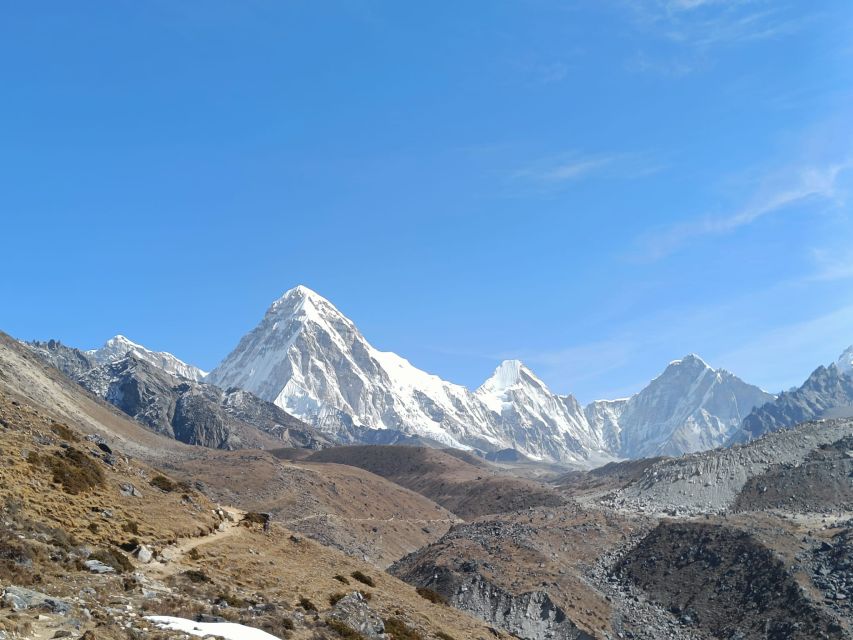
- The trek lasts 14 days and includes a scenic flight from Kathmandu to Lukla, starting the adventure in the Khumbu region.
- Key attractions include stunning views of Everest, Lhotse, Nuptse, and the sunrise from Kala Patthar.
- Accommodations are in cozy teahouses, offering shared or private rooms and traditional Nepalese meals.
- Daily activities involve acclimatization hikes and visits to villages like Namche Bazaar and Tengboche.
- A moderate fitness level is required, with safety measures and support staff provided throughout the trek.
It's also worth checking out some other tours and experiences nearby.
Trek Overview and Highlights
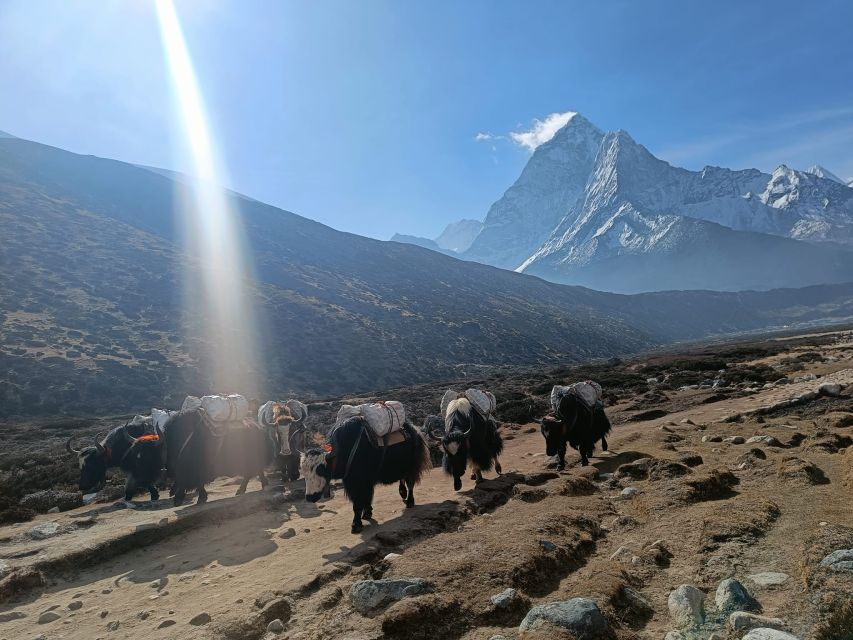
Embarking on the Everest Base Camp Trek offers adventurers a stunning 14-day journey through the breathtaking Khumbu region of Nepal, where they’ll experience not only the majestic peaks but also the rich culture of the Sherpa people.
This popular trekking route leads to Everest Base Camp, showcasing spectacular views of iconic mountains like Lhotse, Nuptse, and Ama Dablam. Along the way, trekkers can explore the vibrant town of Namche Bazaar, filled with unique shops and local eateries.
A highlight of the trek includes witnessing the breathtaking sunrise from Kala Patthar, an unforgettable experience.
With a moderate fitness level required, trekkers can enjoy the scenery while seeing the traditions and hospitality of the Sherpa community.
Detailed Trek Itinerary
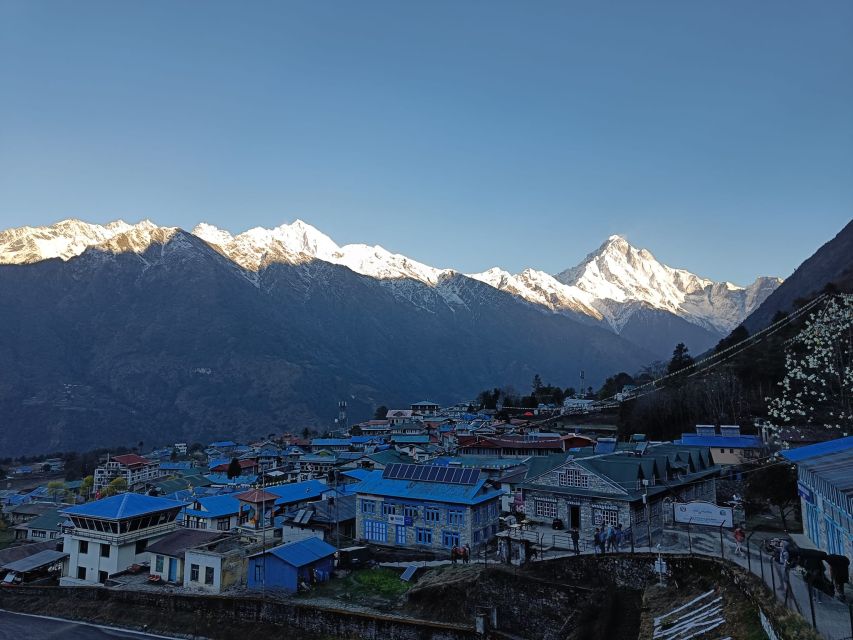
After soaking in the vibrant culture and stunning landscapes during the trek’s highlights, participants can look forward to a well-structured itinerary that guides them through the key stages of the Everest Base Camp adventure.
The journey kicks off with a scenic flight from Kathmandu to Lukla, followed by trekking through iconic villages like Namche Bazaar, Tengboche, and Dingboche.
Each day brings new experiences, from acclimatization hikes to breathtaking views of the Khumbu Glacier.
The trek culminates at Everest Base Camp, where trekkers can soak in the majesty of the world’s highest peak.
Accommodation in cozy teahouses and the chance to savor traditional Nepalese cuisine add to the enriching experience, making every moment memorable.
Inclusions and Services
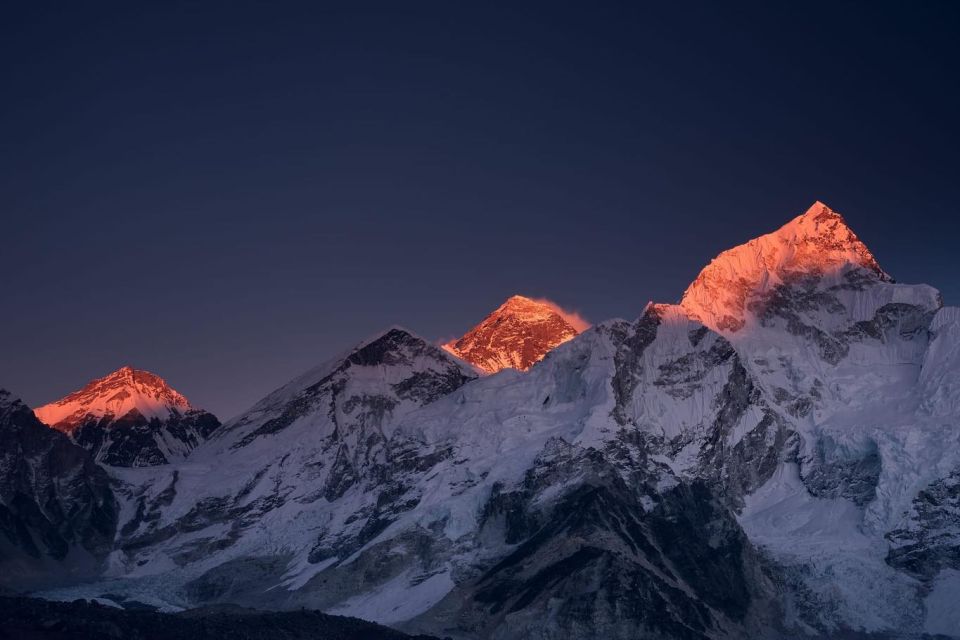
The Everest Base Camp Trek offers a comprehensive package that includes essential services and accommodations to ensure a smooth and enjoyable experience for all trekkers. Participants receive airport pick-up and drop-off, along with two nights in a Kathmandu hotel, complete with breakfast.
During the trek, trekkers enjoy meals—breakfast, lunch, and dinner—served in simple teahouses. An experienced, government-licensed guide and a porter, shared between two trekkers, accompany the group.
The package also covers domestic flights between Kathmandu and Lukla, national park entrance fees, and all necessary government charges and taxes. A first aid kit is carried by the Sherpa leader, ensuring safety throughout the trek.
Extra hotel nights in Kathmandu can be arranged if needed.
Accommodation Options
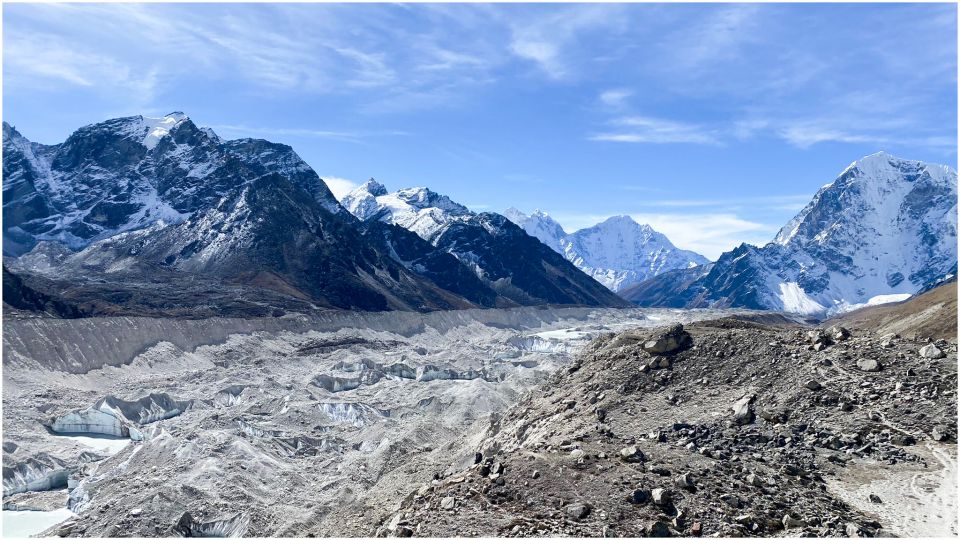
Trekkers can expect comfortable accommodation in simple teahouses along the route, providing a cozy retreat after a day of exploring the breathtaking Himalayan landscape. These teahouses offer a blend of warmth and traditional charm, making them ideal for resting and socializing with fellow trekkers.
| Teahouse Feature | Description | Example Location |
|---|---|---|
| Room Type | Shared or private rooms available | Namche Bazaar |
| Facilities | Basic amenities, hot showers | Tengboche |
| Dining Options | Traditional Nepalese meals offered | Dingboche |
In these teahouses, trekkers can savor hearty meals while sharing stories of their adventures, creating unforgettable memories in the heart of the Himalayas.
Health and Safety Tips
When embarking on the Everest Base Camp Trek, it’s essential to prioritize health and safety to ensure a rewarding experience in the high-altitude environment. Proper preparation can make a significant difference.
Here are three key tips to keep in mind:
-
Acclimatize Gradually: Take your time to acclimatize at higher altitudes to prevent Acute Mountain Sickness (AMS). Listen to your body and don’t rush.
-
Stay Hydrated: Drink plenty of water throughout the trek. Staying hydrated helps combat altitude sickness and keeps energy levels up.
-
Know Your Limits: It’s crucial to recognize your physical limits. If you feel unwell, communicate with your guide and consider descending if necessary.
Following these tips helps trekkers stay safe and enjoy the breathtaking beauty of the Himalayas.
Cultural Insights
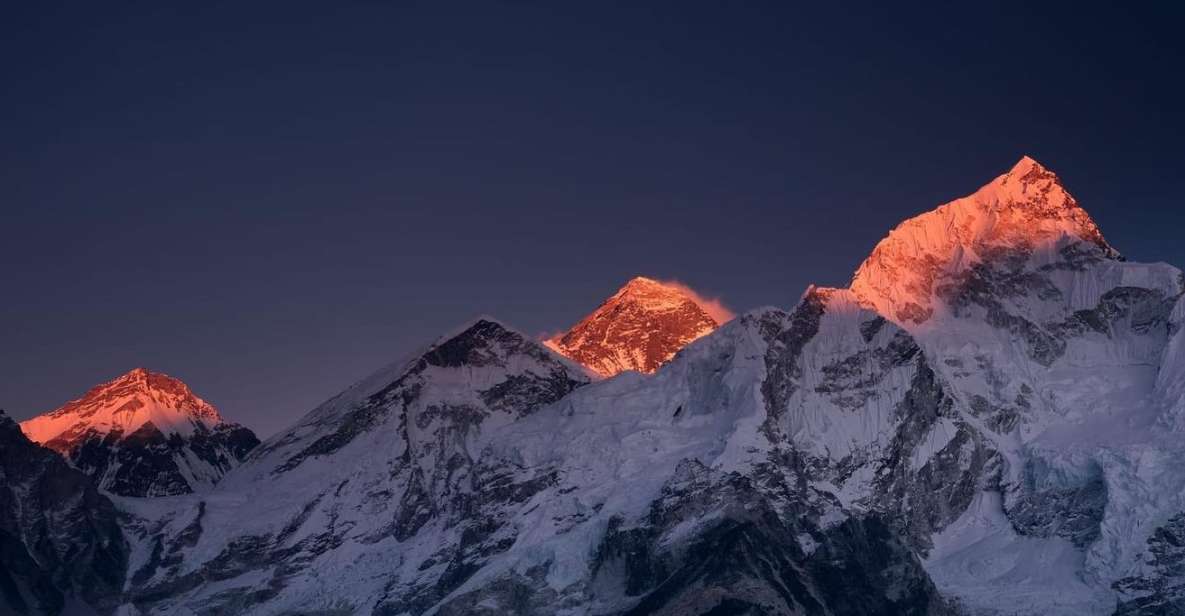
Understanding the unique culture of the Sherpa people adds a rich layer to the Everest Base Camp Trek experience, enhancing the journey beyond just the stunning landscapes.
Trekking through the Khumbu region, trekkers encounter vibrant monasteries and colorful prayer flags, each reflecting the deep spiritual beliefs of the Sherpas. Visitors often witness daily rituals that showcase the community’s connection to Buddhism.
Engaging with local families and sampling traditional Sherpa cuisine provides insight into their way of life. The bustling market of Namche Bazaar offers a glimpse of local commerce and craftsmanship.
Packing Essentials
Packing for the Everest Base Camp Trek requires careful consideration of essential gear to ensure a comfortable and safe journey through the majestic Himalayas. Trekking at high altitudes demands specific items that can make all the difference in the experience.
Here are three must-have essentials:
-
Layered Clothing: Include moisture-wicking base layers, an insulating mid-layer, and a waterproof outer layer to adapt to changing weather conditions.
-
Quality Footwear: Invest in sturdy, well-fitted trekking boots that provide support and traction on rugged terrain.
-
Sleeping Bag: A high-altitude sleeping bag with good insulation is crucial for warmth during cold nights in the teahouses.
With the right gear, trekkers can focus on the breathtaking views and cultural experiences along the way.
Booking Information
Securing a spot for the Everest Base Camp Trek involves checking availability and selecting the desired dates to ensure a smooth adventure. Interested trekkers should book their trip well in advance, especially during peak seasons, to guarantee a spot.
The process typically includes filling out a booking form and making a deposit to confirm the reservation. Participants can enjoy the flexibility of free cancellation up to 24 hours before the trek for a full refund.
It’s essential to consider additional costs for personal equipment, gratuities, and extra services like laundry or battery charging.
Lastly, all trekkers must meet at Tribhuvan International Airport for pick-up, making travel arrangements straightforward and convenient.
Here's a few more nearby tours and experiences we think you'll like.
Frequently Asked Questions
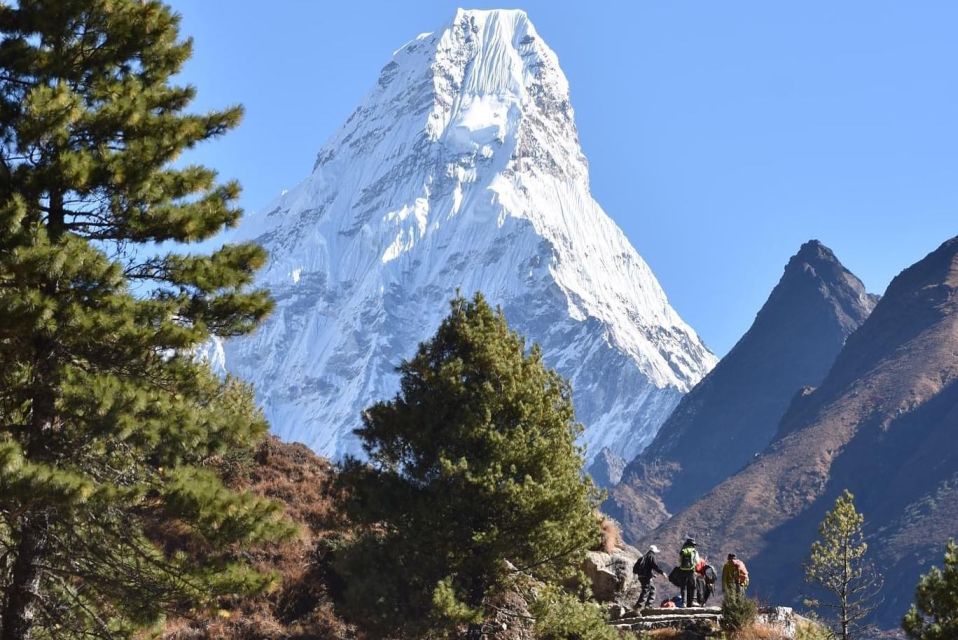
What Is the Best Time to Undertake the Everest Base Camp Trek?
The best time to trek in the Everest region is during spring (March to May) and autumn (September to November). During these months, the weather’s clearer, temperatures are milder, and views are stunning.
Are There Age Restrictions for Participants on the Trek?
When considering age restrictions, most trekking companies don’t impose strict limits. However, participants should assess their fitness levels and health. It’s wise for older trekkers to consult a doctor before embarking on any challenging trek.
How Challenging Is the Trek Compared to Other Trekking Routes?
The trek’s challenge level is moderate, often requiring good fitness. Compared to other routes, it features steep ascents and varying altitudes, but it’s accessible for those with some trekking experience and determination.
Is It Possible to Do the Trek Independently Without a Guide?
While it’s possible to trek independently, it’s not recommended. Without a guide, trekkers may struggle with navigation, altitude sickness, and safety. Local regulations often require permits, making guided treks a safer and more enjoyable choice.
What Type of Physical Training Is Recommended Before the Trek?
Before the trek, participants should focus on cardiovascular training, strength exercises, and hiking practice. They’ll benefit from building endurance through long walks, stair climbing, and aerobic activities to prepare for the physical demands ahead.
Not for you? Here's more of our most recent tour reviews happening neaby
- From Kathmandu: Bungee Jumping Day Trip
- Day Hiking Including Nagarkot Sunrise
- Nagarkot Nights : A Night of Luxury, Mountains & Sunrise
- Rafting in Trishuli
- Thamel: Trishuli River Rafting Tour With Transfers and Lunch
- Ancient Hindu Temples in Kathmandu
- Bhaktapur Old City and Durbar Square Half-Day Tour
- Langtang Gosainkunda Lake Trek: 10 Days Guided Langtang Trek
- Recently Open Manaslu Circuit Tea House Trek by Local Guide
- From Kathmandu: 3-Day Chitwan National Park Tour
- Nepal: Kathmandu Valley Heritage Site Day Tour
- Private 12-Day All Inclusive Guided Annapurna Base Camp Trek Tour
- Kathmandu Valley Guided Tour
- Walking Tour of Kathmandu (Half Day)
- Ganga Jamuna Dhading Trek
Recap
The Everest Base Camp Trek offers an incredible blend of adventure, culture, and stunning landscapes.
Over 14 days, trekkers can experience the majestic beauty of the Himalayas while seeing the rich Sherpa culture.
With careful planning, essential gear, and the right mindset, anyone can embark on this unforgettable journey.
Whether gazing at sunrise from Kala Patthar or exploring Namche Bazaar, this trek promises memories that will last a lifetime.
So, lace up those boots and get ready!
